Welcome to FISH FOOD TIMES
Dec. 2015 issue No.144-2

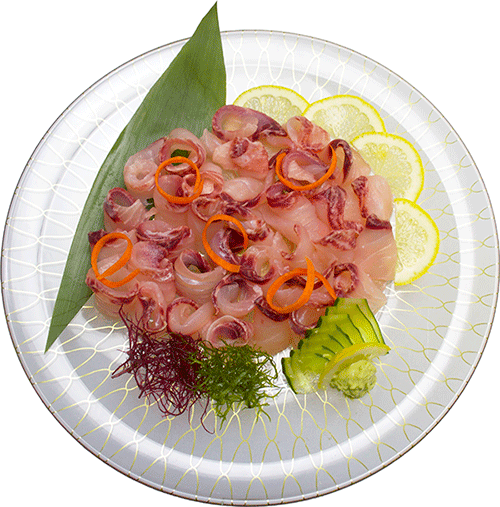
Mullet arai sashimi
Well, next let's also mentioned about mullet the main body of fish.
When you dismantle the mullet in three pieces, following white meat a sense of transparency, such as the image appears.
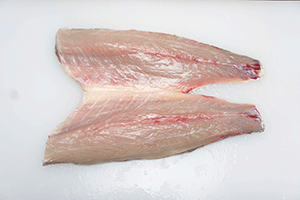
Without any consideration, it is as follows as to remove the skins with a method of Sotobiki.
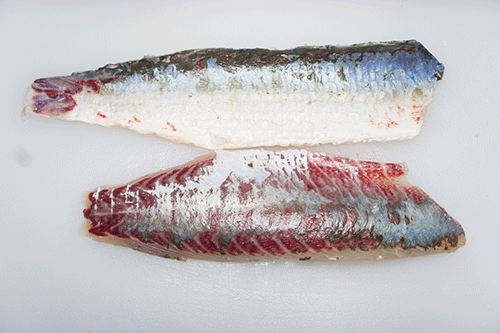
Surface of the subcutaneous has been such a dark red color even after removal of the skin, is a state not red pomp. And over time, will flying colors red mullet subcutaneous, it has the disadvantage that comes in dark gradually. In addition, since discoloration speed is also fast, the difficulty of handling it has become one of the causes of hate mullet fish concerned parties by this discoloration.
However, this negative factor is he can be removed by knife technology. It is similar to the following image, the way to remove the skin "sotobiki technique" rather than, is be able to approach the solution is to use the "uchibiki technique" to take a thick skin.
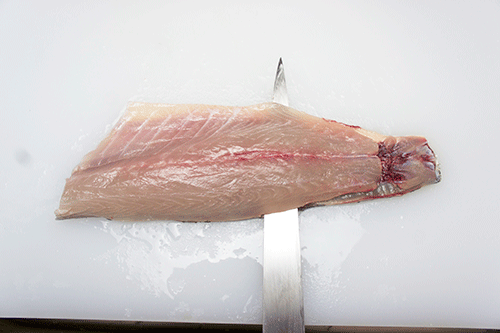
Although in the image above shows uchibiki techniques, which because both hands is required, and can not be physically photographing the image alone. So it is described because no choice but to describe in words, this is in short left hand is not placed towards the tail fin, place the left hand to have a part of the head, but techniques for shifting the knife towards the left side of the head.
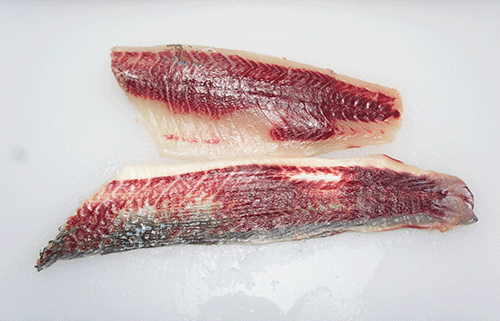
So to speak, it is a "poor technique of skin removal" and even can be said how intentional. In this way, as in the image above, and upon removal of the peel in sotobiki methods, it emerges that background seems white meat to red color that no comparison is conspicuous.
But if your technology is too high ... (?), As shown in the following image, How to if you've removed the well skin, but do not be worried.
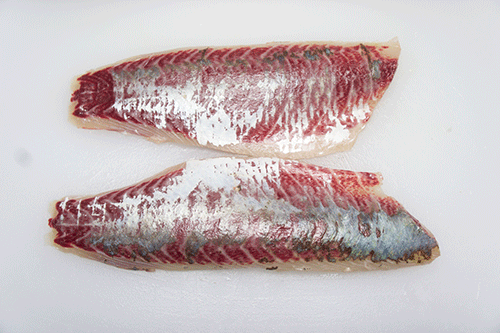
It must first be separated only in the back body and abdominal. By the way, since the dark red meat bone of mullet does not exist a size that stands out only a portion of the head side, put a knife as shown in the following image.
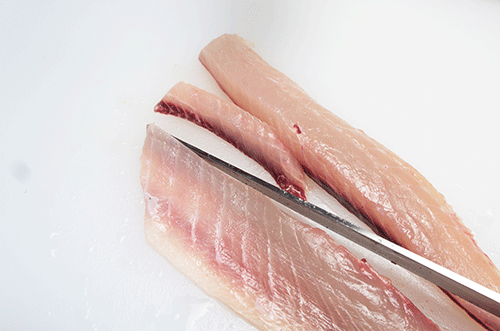
if you divided into only the back body and the abdominal, and inside out and scrape off with a kitchen knife the dark red meat part as shown in the following image.
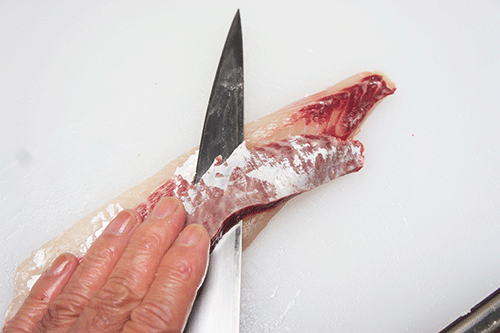
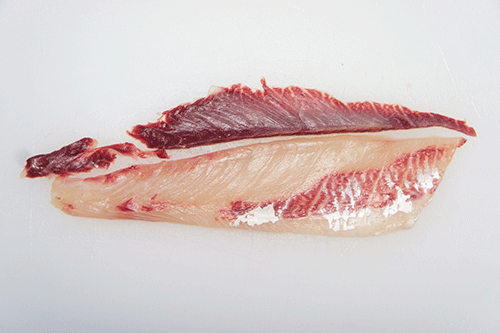
If you scrape off the dark red meat part to discolor like this dark red, so that the site where white meat is conspicuous remains.
When you do this in the "ice arai sashimi", go with sliced thinly as the bottom of the left image.
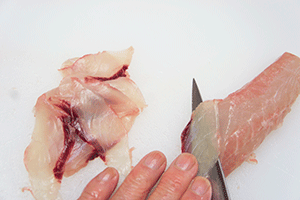
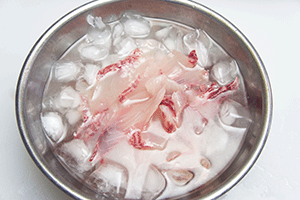
if you thinly sliced, and placed into ice-water, and wait for rounded phenomenon contraction by cell shrinkage.
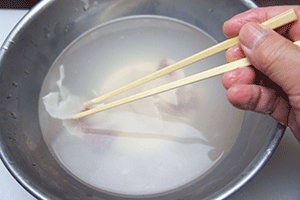
But already I had become rigor mortis state past the live fish, the temperature is to prepare the hot water of about 50 ℃ of degree a little hotter than the temperature of the bath. And as in the above image, using chopsticks or ladle, using a method called "hot arai" as to wash the fish meat, less expected to be similar to and shrinkage phenomena.
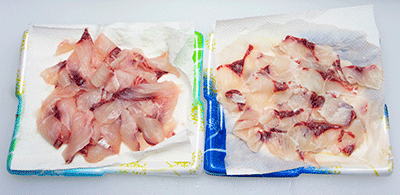
The upper left side of the image is ice arai, and the right's hot water arai that was dive the hot water of 50 ℃. When making a right water arai, fish meat so that the swollen white, unless a mistake that the temperature of the water is too high, returns a bit over time the original red color.
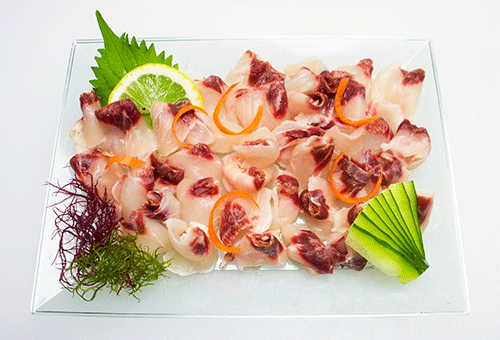
In order to put the feeling atmosphere similar to the shrinkage phenomenon of live fish, when put the fish meat of usutukuri sashimi dish is rounded with a finger, it becomes goods, such as Intro image and on the image.
Then we try to sushi species fish meat shavedthe the dark red meat part of mullet surface.
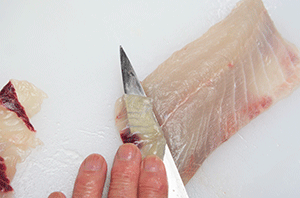
I think not even that the nigiri sushi of the following image that uses a mullet does not appear as if amberjack of nigiri sushi.
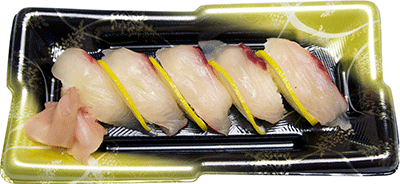
At a first glance, became a beautiful white meat appearance enough to mistaken it's nigiri sushi of amberjack, it is has become possible by the fact that cut large the dark red meat part of the surface as shown in the following left image.
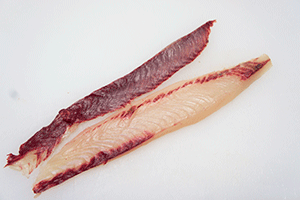
So if you have the removal of skillful skin in general sotobiki, What if I want to take advantage of this as it is. It is still in the fillet products, as shown in the following image, it is considered that it is most appropriate to provide for the sauteed and fly cuisine.
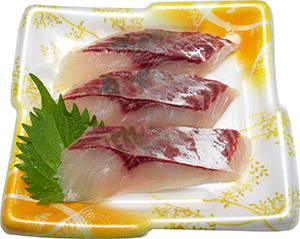
Now the second page of this month's issue is So far has been noted about how to use the fish itself mullet, not yet still wrote anything about is the best value of mullet "fish eggs". But dried mullet roe that I began created using the mullet, which was prepared at the end of October, so unfortunately not completed yet until the end at the time of the end of November, now is the write down not only be halfway.
Since also difficult in that pick up the only thing of dried mullet roe at another time, at the time of writing issue this month to readers, and understand that dried mullet roe is still in the middle unfinished creation, I would like you to readthe following articles.
Well dried mullet roe is speaking Historically, those that were originally made in the Mediterranean, through the Silk Road, are those transmitted to Japan via China. Is because it was similar to the stone of the Sumi that the shape was introduced from the Tang Dynasty in Japan, is that with this becomes "karasumi".
In the authentic Italy, called Bottarga the dried mullet roe, is also used as the material of the pasta dishes. This dish is that of a very high price luxury pasta in the field. Mediterranean coast of Spain, Italy, Greece, in Turkey, such as not only a mullet, tuna and cod and hake, in a variety of fish eggs such as dried mullet roe is made. Dried mullet roe of mullet in Italian Bottarga di Muggine, dried mullet roe of tuna seems to say Bottarga di Tonno.
Era in which they were transmitted to Japan via China from the Mediterranean countries, at first seems dried mullet roe using the eggs of Spanish mackerel has been made, it seems at making in mullet became mainstream at a later time . So you follow the history of dried mullet roe in Japan, described as "dried mullet roe those that were allowed to sun drying the eggs of mullet with salted" is not correct.Correctly it is not limited to the mullet, dried mullet roe to make fish eggs other than mullet it is made using a Spanish mackerel and mackerel eggs in Kagawa Prefecture is not an imitation, these also may be referred to as properly dried mullet roe.
Dried mullet roe is salted 4-5 days, If you leave the sun was about 10 days, but that's to be a plausible form. Its taste is its identity condensation of taste due to dehydration, taste and flavor also it seems is becoming rich by dehydration.
In Europe, which has a long-term aging culture of food, such as raw ham and cheese it seems to be aged dried mullet roe. When you have as it is kept air-dried dried mullet roe, but there is a possibility that becomes tick tick as if dried abalone, dried mullet roe is an important element of even the taste of that sticky feeling. For example, for the purpose of aging that you do not proceed is extremely dry in Turkey, the thing is with the addition of work that covers the surface of dried mullet roe with beeswax. Those aged over a period of six months a year in this way, rather than the level of the taste of the condensate is that of increasing the flavor itself, its taste seems to further doubling.
Now the case of the author, because the dried mullet roe making is a amateur, and if I have seen in your reader a process of trial and experiment below, If you are interested I think if it is possible to to any reference.
| Development and experiment of making of dried mullet roe | |
|---|---|
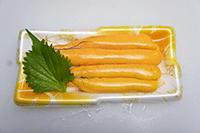 |
|
| 1, fish eggs taken from mullet abdominal. State that have not yet the task of removing the blood from the blood vessel | |
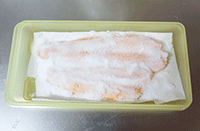 |
|
| 2, put in plenty of generous amount of salt the fish eggs to remove the blood, left to stand for 10 days in the refrigerator chilled room | |
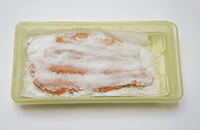 |
|
| 3, after 10 days of tick tick state that moisture not much flow also taken out from the chilled compartment fish eggs | |
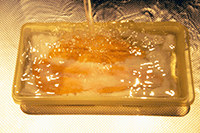 |
|
| 4, put the fish eggs taken out in running water, wash away the salt | |
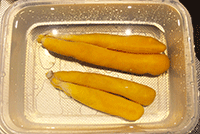 |
|
| 5, put it in the refrigerator for about 30 hours. Replace the water in the few hours irregular intervals (about 5 times) | |
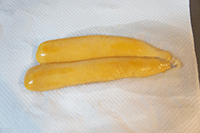 |
|
| 6, taken from the water without salt, soft state before entering the drying | |
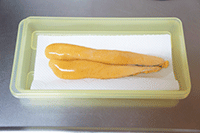 |
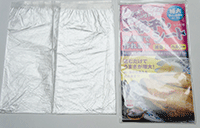 |
| 7, put dried mullet roe to the false bottom type container | 7, it will prepare a separate Pichittosheet |
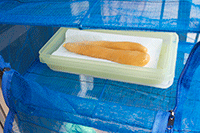 |
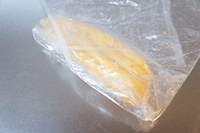 |
| 8, put together with a container to dry basket net type | 8, wrap the dried mullet roe to Pichitto sheet |
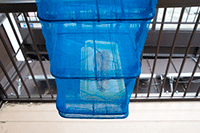 |
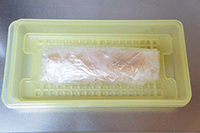 |
| 9, hung in airy good veranda | 9, put in the refrigerator along with the container |
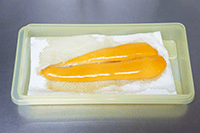 |
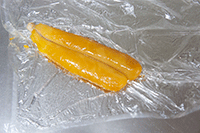 |
| 10, I can confirm that the moisture is missing without wrinkling those of natural drying | 10, if you open two days later in the Pichitto sheet, it is missing moisture as get wrinkles |
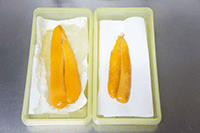 |
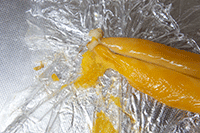 |
| 11, the difference in loss degree of moisture, is changing the size | 11, skin is attached to the sheet, part of the skin was torn |
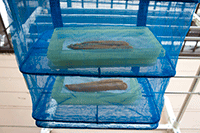 |
|
| 12, drainage using Pichitto sheet is determined that problematic, changes both to natural drying | |
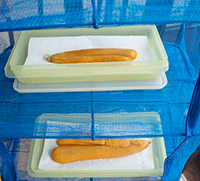 |
|
| 12, drainage using Pichitto sheet is determined that problematic, changes both to natural drying | |
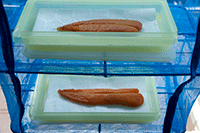 |
|
| 13, when air-dried while upside down for about 10 days, becomes dark color little by little | |
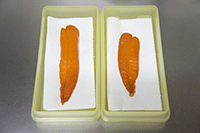 |
|
| 14, those of the right Pichitto sheet processing is well omission of water, and is considerably hard | |
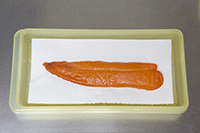 |
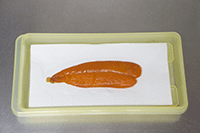 |
| 15, also those in the upper left which had been treated from the beginning in air drying, has been wrinkle turns black little by little | |
Homemade dried mullet roe is a progressive middle of the stage without still completed. Image's insertion upcoming. |
|
This month's issue last conclusion is likely to end with a little half-baked form.
Over a period of time from now, while returns patiently front and back, dried mullet roe will be really dried mullet roe seems to color and firmness, I think I want to wait to become eat delicious. Since it is scheduled to sequentially chasing stage until future completion, readers stay tuned.
Although the current evaluation of the mullet has a violent praise or censure, in Japan, it was one of the fish called by different names at different stages of its growth, along with yellowtail from time immemorial. In the thriving Ise-Shima region of mullet fishing is an auspicious fish that dedication mullet in such ritual and Hachiman festival of good catch prayer, and brought the deeply involved in Japanese life. Historically, it is also a Chronicles and Honcho shokkan (Mirror of food in our country) to fish also appear. Such fish, not little attention in the fish department of today's era, the author to know the fact that you are being treated like a poor grade of fish, is the one person that is a very sad thought.
If distant past the era, but there seems to be a fact that there is still a lot of interest as it can not be very describing in about two pages of this month's issue, the content that can be referred to a mullet in this journal would be this degree.
Where to now only fish that have been farmed is noticeable even after Japan, natural fish that has been deeply involved with the history of Japanese, such as the mullet is hardly attention. And also very good mullet of freshness, it is the fact that only is evaluated surprising giveaway price, it is to feel that or not than something wrong fundamentally.
There is a thing that you want to all means ask readers. It is believed without the words of the people who are contemptuous loudly that of mullet any doubt, without the effort to eat delicious mullet, is that please do not be profusely to demean that of mullet. Mullet is not a so poor grade of fish.
To previous page
An opinion and the communication are to iinfo@fish food times
Date of updating Dec.1, 2015
